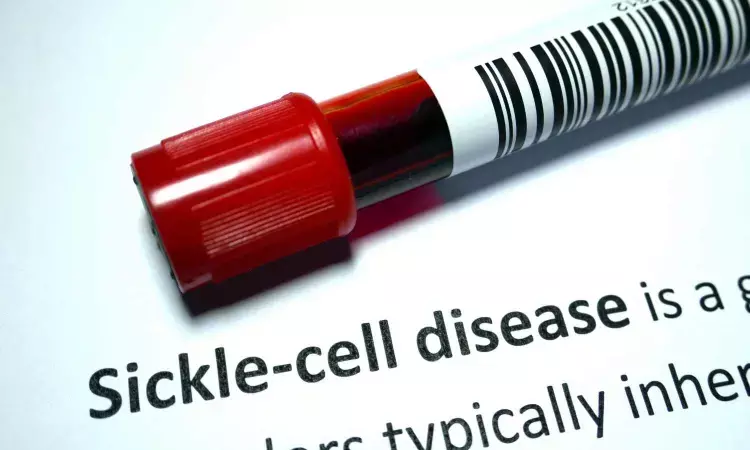- Home
- Medical news & Guidelines
- Anesthesiology
- Cardiology and CTVS
- Critical Care
- Dentistry
- Dermatology
- Diabetes and Endocrinology
- ENT
- Gastroenterology
- Medicine
- Nephrology
- Neurology
- Obstretics-Gynaecology
- Oncology
- Ophthalmology
- Orthopaedics
- Pediatrics-Neonatology
- Psychiatry
- Pulmonology
- Radiology
- Surgery
- Urology
- Laboratory Medicine
- Diet
- Nursing
- Paramedical
- Physiotherapy
- Health news
- Fact Check
- Bone Health Fact Check
- Brain Health Fact Check
- Cancer Related Fact Check
- Child Care Fact Check
- Dental and oral health fact check
- Diabetes and metabolic health fact check
- Diet and Nutrition Fact Check
- Eye and ENT Care Fact Check
- Fitness fact check
- Gut health fact check
- Heart health fact check
- Kidney health fact check
- Medical education fact check
- Men's health fact check
- Respiratory fact check
- Skin and hair care fact check
- Vaccine and Immunization fact check
- Women's health fact check
- AYUSH
- State News
- Andaman and Nicobar Islands
- Andhra Pradesh
- Arunachal Pradesh
- Assam
- Bihar
- Chandigarh
- Chattisgarh
- Dadra and Nagar Haveli
- Daman and Diu
- Delhi
- Goa
- Gujarat
- Haryana
- Himachal Pradesh
- Jammu & Kashmir
- Jharkhand
- Karnataka
- Kerala
- Ladakh
- Lakshadweep
- Madhya Pradesh
- Maharashtra
- Manipur
- Meghalaya
- Mizoram
- Nagaland
- Odisha
- Puducherry
- Punjab
- Rajasthan
- Sikkim
- Tamil Nadu
- Telangana
- Tripura
- Uttar Pradesh
- Uttrakhand
- West Bengal
- Medical Education
- Industry
Sickle cell disease tied to significantly elevated risk of retinal vascular occlusion: Study

A study by Kaufmann and team examined the risk of big artery retinal vascular occlusion (RVO) in a large national US database and found that individuals with sickle cell disease (SCD) who had hemoglobin SS (HbSS) posed a much greater risk. The key findings of this study were published in the Ophthalmology Retina journal.
SCD affects about 100,000 individuals in the US, and it costs the healthcare system over $3 billion a year. Despite RVO has been documented in published research to occur in SCD patients, including bilateral occlusions, the actual risk of RVO is still unclear. Also, no research has assessed the risk of RVO in the US population as a whole or in strata based on hemoglobin mutation previously. This study assessed the risk of venous and arterial RVO in individuals with different β-globin mutations by this study.
94 million patients were included in the cross-sectional and retrospective cohort research from 2006 to 2024 using the national database of the TriNetX US Collaborative Network. The patients with sickle cell were included using the ICD-10 codes, such as sickle cell trait, hemoglobin SCD (HbSC), or sickle cell disease (SCD) (HbSS). Propensity score matching was used to create matched control cohorts based on factors such as age, race, sex, ethnicity, diabetes, smoking, dyslipidemia, hypertension, and obesity. Hereditary corneal dystrophies served as a negative control for the outcomes of interest, which comprised any RVO, central RVO (CRVO), branch RVO (BRVO), CRAO, and branch retinal artery blockage (BRAO).
Following propensity score matching based on the identified characteristics, the HbSS cohort consisted of 10,802 patients, the HbSC cohort of 4296 patients, and the sickle cell trait group of 15,249 individuals. As a result, there were 10,802 in the cohort matched for HbSS, 4206 in the cohort matched for HbSC, and 15,249 in the cohort matched for sickle cell trait.
Analysis revealed that the individuals with HbSS had a 2.33 times increased chance of developing any kind of RVO when compared to matched controls without SCD. The individuals with HbSS had a 4.90 times greater chance of developing BRAO and a 2.71 times higher risk of developing CRAO than the people without SCD.
The individuals with HbSC disease had a 3.14 times greater chance of getting any RVO when compared against their matched controls without SCD. However, the study found that patients with sickle cell trait had no statistically increased risk of having any kind of RVO. Overall, patients with HbSS sickle cell illness have a higher chance of developing retinal vascular occlusions, notably CRAO and BRAO, than the patients without sickle cell disease.
Source:
Kaufmann, G. T., Russell, M., Shukla, P., Singh, R. P., & Talcott, K. E. (2024). Retrospective Cohort Study of Sickle Cell Disease and Large Vessel Retinal Vascular Occlusion Risk in a National US Database. In Ophthalmology Retina. Elsevier BV. https://doi.org/10.1016/j.oret.2024.07.013
Neuroscience Masters graduate
Jacinthlyn Sylvia, a Neuroscience Master's graduate from Chennai has worked extensively in deciphering the neurobiology of cognition and motor control in aging. She also has spread-out exposure to Neurosurgery from her Bachelor’s. She is currently involved in active Neuro-Oncology research. She is an upcoming neuroscientist with a fiery passion for writing. Her news cover at Medical Dialogues feature recent discoveries and updates from the healthcare and biomedical research fields. She can be reached at editorial@medicaldialogues.in
Dr Kamal Kant Kohli-MBBS, DTCD- a chest specialist with more than 30 years of practice and a flair for writing clinical articles, Dr Kamal Kant Kohli joined Medical Dialogues as a Chief Editor of Medical News. Besides writing articles, as an editor, he proofreads and verifies all the medical content published on Medical Dialogues including those coming from journals, studies,medical conferences,guidelines etc. Email: drkohli@medicaldialogues.in. Contact no. 011-43720751


